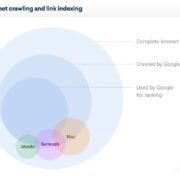Telecoms have been around for a long time, and despite the advances in technology, they have not become obsolete. There are several reasons for this: telecoms allow people to communicate with each other no matter where they are in the world, they provide a reliable and secure means of communication, and they are an affordable way to connect to the internet.
The Advantages of a Telco Switch
A telco switch is a great solution for businesses who are looking to cut costs and improve their telecom services. Here are some of the advantages of using a telco switch:
1. Reduced Costs: A telco switch can help reduce the cost of your telecom services by allowing you to use multiple providers simultaneously. This can save you money on your monthly bill, and it can also help you avoid expensive contracts.
2. Increased flexibility: A telco switch allows you to customize your telecom services in a way that is tailored to your needs. This means that you can get the features and services that you need without having to pay for features that you don’t use.
3. Improved service quality: A telco switch can help improve the quality of your telecom services by connecting you to the best available networks. This way, you’re guaranteed high-quality service no matter where you are in the world.
4. Greater choice: A telco switch gives you greater choice when it comes to your telecom providers. This means that you can select the provider that best suits your needs, regardless of where they are located.
5. Increased security: Atelco switch can help ensure that your telecom information is safe and secure. This way, you can rest assured that your confidential data will be protected from unauthorized access.
The Disadvantages of a Telco Switch
A telco switch is a term used to describe the transition of telecommunications providers. In simple terms, a telco switch refers to the process by which one telecommunications provider moves its customers over to another. There are a number of disadvantages to a telco switch, which include:
1. Telco switches can be disruptive for customers. If a customer’s service is transferred to a new provider, they may experience some disruption in their service while the transition is complete. This disruption can range from minor hiccups, such as slower internet speeds or longer wait times for phone service, to more serious problems, such as lost telephone numbers or interrupted service altogether.
2. Telco switches can be costly for providers. Moving customers across networks can be costly, both in terms of money spent on marketing and recruitment efforts and in terms of lost revenue from lost sales.
3. Telco switches can create conflicts of interest. When one company is responsible for moving all of its customers across its network, it’s in their financial interest to do so as quickly and efficiently as possible. This often leads to rushed transitions that may not be ideal for either the customer or the provider.
4. Telco switches can lead to lost customer data. When a customer’s service is transferred to a new provider, their data may be lost as well. This can include personal information, such as addresses and phone numbers, financial data, such as account numbers and passwords, and information about the customer’s online activities, such as browsing history.
5. Telco switches can create security risks. If a customer’s personal information is lost during the transition process, it could potentially be accessed by criminals. Likewise, if a provider’s systems are compromised during the switch process, customer data may be at risk.
What is Telco Switching?
Telco switching is the process of migrating a customer’s telecommunications services from one telecom carrier to another. This process can be done through the use of an intermediary, such as a Telco Switching Service Provider (TSP).
Telco switching can be beneficial for both the customer and the TSP. For the customer, switching can mean gaining access to new services, features, and pricing options. For the TSP, switching can result in increased revenue as customers are switched over to their service.
There are several factors that go into making a successful telco switch. The TSP must have a comprehensive understanding of the migration process and be able to provide a high-quality service to both the customer and their existing telecommunications provider. Additionally, the TSP must have adequate resources in order to accommodate peak migration periods.
The Different Types of Telco Switches
There are a few types of telco switches, each with its own unique set of capabilities and benefits. In this blog post, we’ll discuss three types of telco switches: edge-core, central-core, and distributed-core switches. We’ll also outline the different advantages and disadvantages of each type, as well as offer some tips on choosing the best switch for your network.
Edge-Core Switches:
Edge-core switches are designed to handle small networks and traffic volumes. They typically have a small number of ports (between two and eight), which makes them ideal for connecting devices in close quarters such as between servers and workstations. Edge-core switches also have low latency and are generally fast. However, they lack features found in more advanced switches, such as load balancing and deep packet inspection.
Central-Core Switches:
Central-core switches are best suited for larger networks with high traffic volumes. They typically have more ports (ten or more) than edge-core switches, which allows them to distribute traffic more efficiently across the network. Central-core switches also offer features such as load balancing, deep packet inspection, and bandwidth management that are not
The Pros of a Telco Switch
The telecom industry is constantly changing as new technologies are developed and new players enter the market. One such player is Telco Switch, which is a new telco that is shaking up the industry. Here are some of the pros and cons of this new service.
The Pros of Telco Switch
1. Telco Switch provides a unique service that is not available from any other telco. This allows for a more personalized experience for each individual customer.
2. Telco Switch offers lower rates than traditional telcos. For example, a customer who uses Telco Switch to make calls would likely pay less per month than someone using AT&T or Verizon.
3. Telco Switch has an app-based interface that makes it very easy to use. This makes it ideal for customers who are used to using technology in their everyday lives.
4. Telco Switch provides a high level of customer service. If there are any problems with a customer’s account, they will be helped immediately.
5. The company has a good reputation and has been in business for several years. This means that people know they can trust them to provide a quality service.
Conclusion
A new telco is set to enter the Australian market and it has some big plans. Telstra has announced that it will be launching a new telco, TPG Telecom, in early 2018. The company has not released many details about the telco yet other than to say that it will be focusing on delivering innovative services to its customers. TPG Telecom is expected to have around 4 million customers when it launches in Australia. This could mean big changes for the telecom industry in Australia and we’ll be sure to keep you updated as more information becomes available.


















Comments